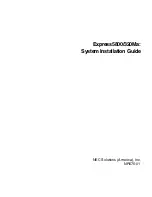
the drum size and the length of the teeth. However, you can see when loaded carding cloth is
reaching its capacity. You need enough tooth exposure to pick and comb incoming fibers. You
can also feel and hear when the cloth becomes too full: the handle will turn with difficulty,
even though no new fiber is being added, and you'll hear a muffled, rubbing sound.
Doffing
Taking the fiber off the carding cloth is called doffing. Often a doffing rod, or similar device, is
used to lift the fiber away from the drum. Most carder manufacturers provide a doffer, but an
old, long, steel knitting needle, an old ice pick, or a painted steel rod will do nicely. (Aluminum
knitting needles are not strong enough.) Be sure that your doffer is not so sharp that it damag-
es the backing of the carding cloth.
First, turn the loaded drum so that the brass strip is exposed. You might think that you can
slide the doffer under the batt and lift up one end. If this is cotton or short wool, you can
-
but
any long fiber will present a dense mat which will not come apart without a struggle. Start at
the far edge and slide the doffer under an inch or two (2.5
-
5cm) of the batt. Lift this, allowing
the fibers to slide apart. Although you may need to pull very hard, don't tear the fibers. If you
think damage is imminent, try a smaller amount. Then work your way across the drum until
you have opened the entire batt. Now one end of the batt is free, but the rest is still caught in
the teeth. If you pull up gently on the loose end while turning the drum backward, most of the
fiber will lift away
-
but not all of it will. The closer you get to the end of the batt, the more fi-
ber will remain in the teeth
-
often as much as half the thickness at the end. Use the rod to lift
the batt away from the drum as you pull the free end of the batt up and back. Lift with the
rod, then pull on the loose end. Back up the drum and repeat. In a few moments the batt will
lift entirely free of the teeth. A word on doffing mesh. Some people like this way of handling
the task. The mesh is an open net that fits the carding cloth
-
you can buy or make one. It is
laid into the teeth and pushed all the way down before carding begins. At unloading time, the
fibers are loosened at the tail end of the mesh and the mesh is pulled up out of the teeth,
bringing the fiber with it. When both sides are firmly held, pull apart. The two halves will re-
tain the original flat configuration. The idea is to separate each batt into thin sheets of fiber
which you'll feed back through the carder.





























